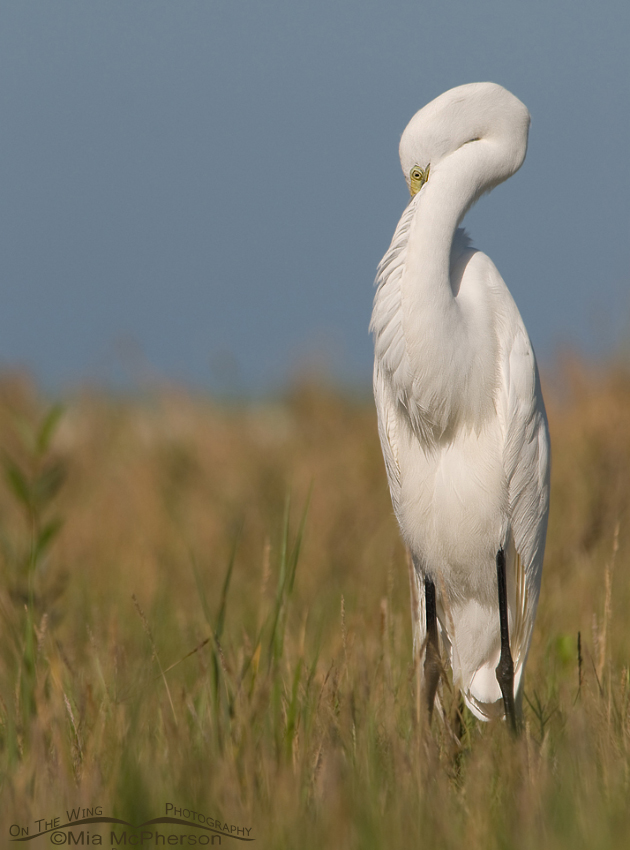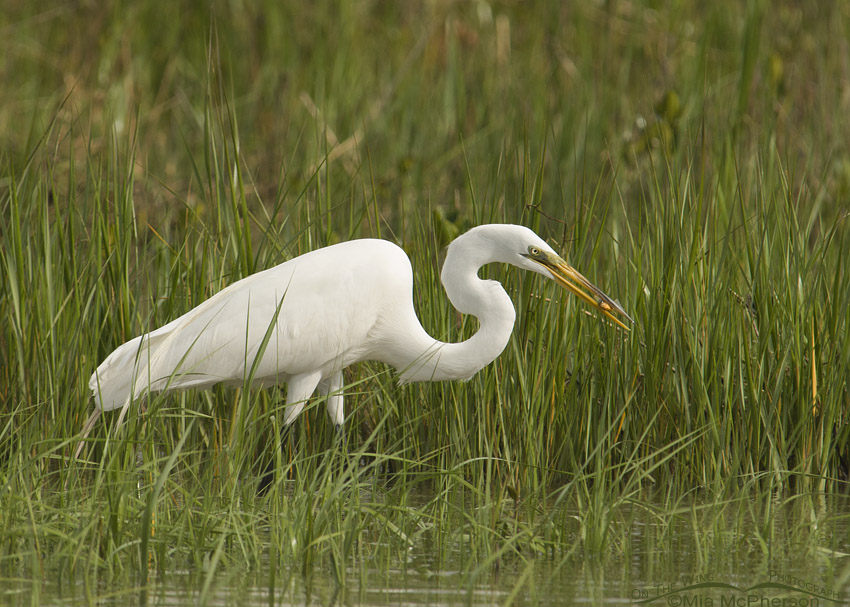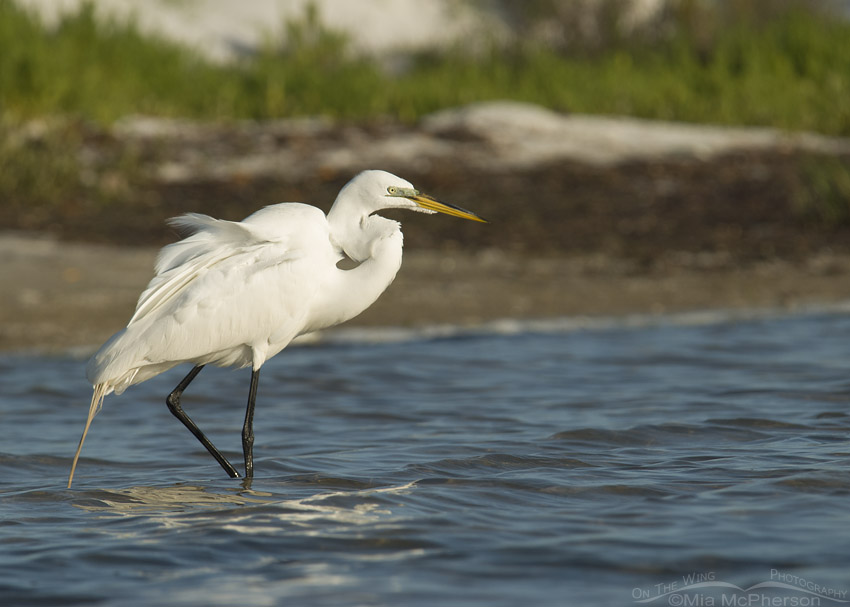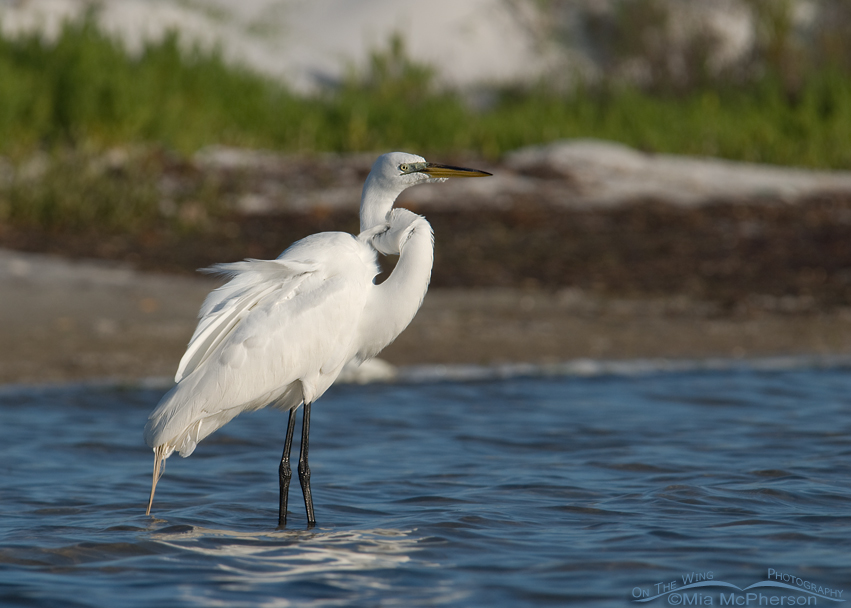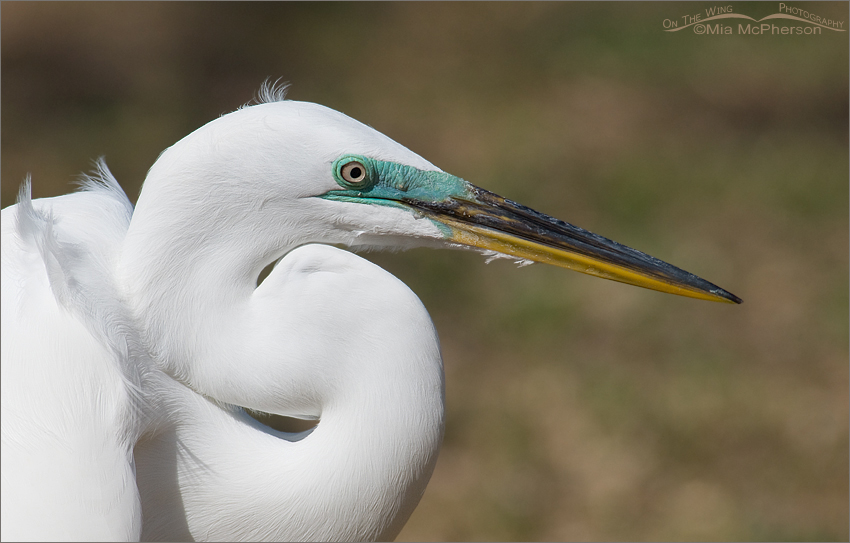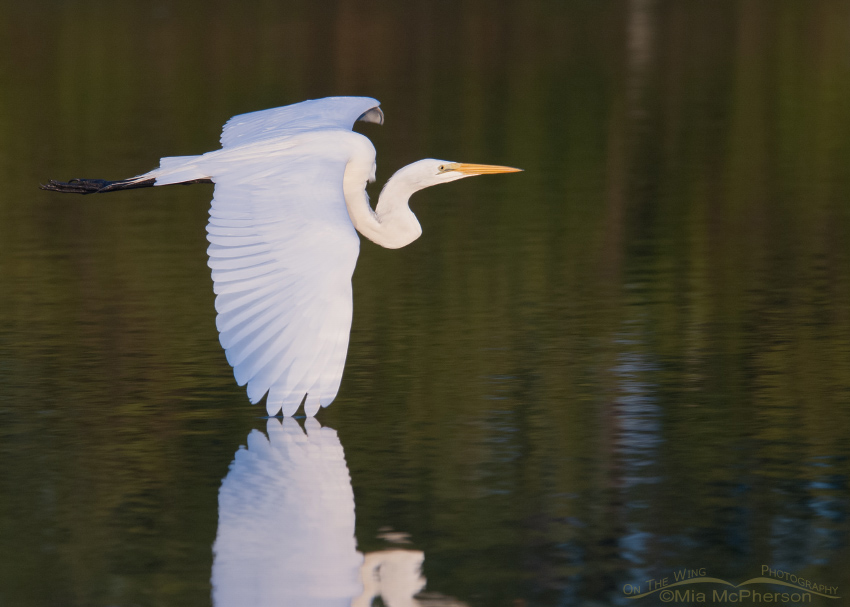
Great Egret Images, Facts and Information:
Ardea alba
- Great Egrets are tall, long-legged wading birds with all white plumage, yellow bills and black legs.
- In some areas Great Egrets are year round residents and in others they are medium distance migrants.
- In the mid nineteenth century Great Egrets were nearly hunted to extinction because of their plumes. At the time they were used in ladies hats. When hunting them became illegal they slowly bounced back and are no longer in danger of extinction.
- Great Egrets can be found in ponds, lakes, marshes, swamps, freshwater, brackish water and saltwater environments.
- Great Egrets eat fish, amphibians, crustaceans, eggs, birds, small mammals, insects and reptiles.
- Great Egrets lay 1 to 6 eggs which hatch in 23 to 26 days. Both sexes incubate and they are monogamous, colonial nesters.
- A group of egrets can be called a “heronry”, “skewer” and “wedge” of egrets.
- Great Egrets can live to be more than 22 years old.
I hope you enjoy viewing my Great Egret photos.
Great Egret hunting in a Spartina marsh
Title: Great Egret hunting in a Spartina marsh
Location: Fort De Soto County Park, Pinellas County, Florida
Date: 6/1/2008
Great Egret with an eye on me
Title: Great Egret with an eye on me
Location: Fort De Soto County Park, Pinellas County, Florida
Date: 5/30/2008
Great Egret in a marsh with prey
Title: Great Egret in a marsh with prey
Location: Fort De Soto County Park, Pinellas County, Florida
Date: 5/9/2008
Calm Great Egret in a tidal lagoon
Title: Calm Great Egret in a tidal lagoon
Location: Fort De Soto County Park, Pinellas County, Florida
Date: 4/25/2008
Resting Great Egret in a Florida lagoon
Title: Resting Great Egret in a Florida lagoon
Location: Fort De Soto County Park, Pinellas County, Florida
Date: 4/25/2008
Portrait of a Great Egret in breeding plumage
Title: Portrait of a Great Egret in breeding plumage
Location: Fort De Soto County Park, Pinellas County, Florida
Date: 4/18/2008



